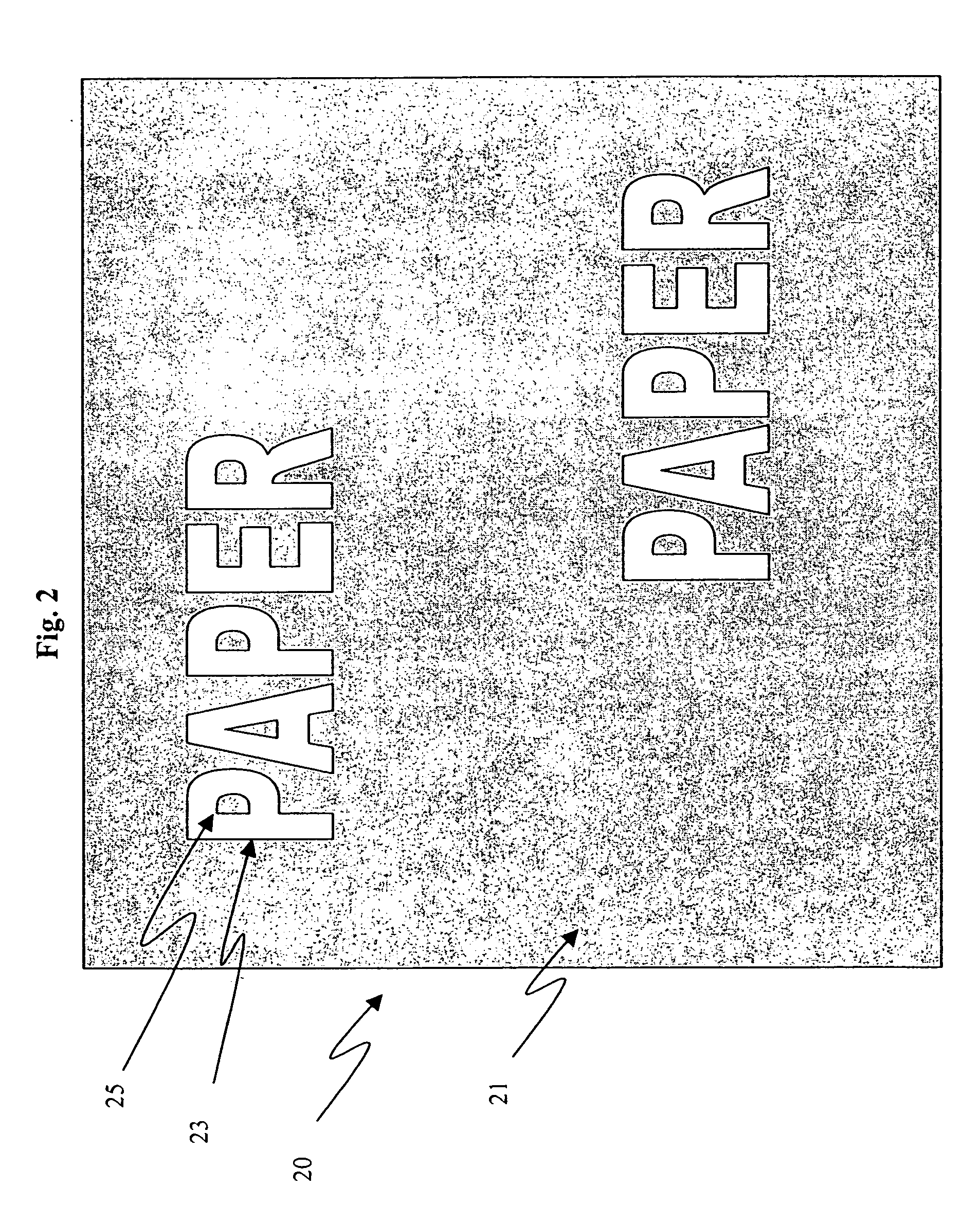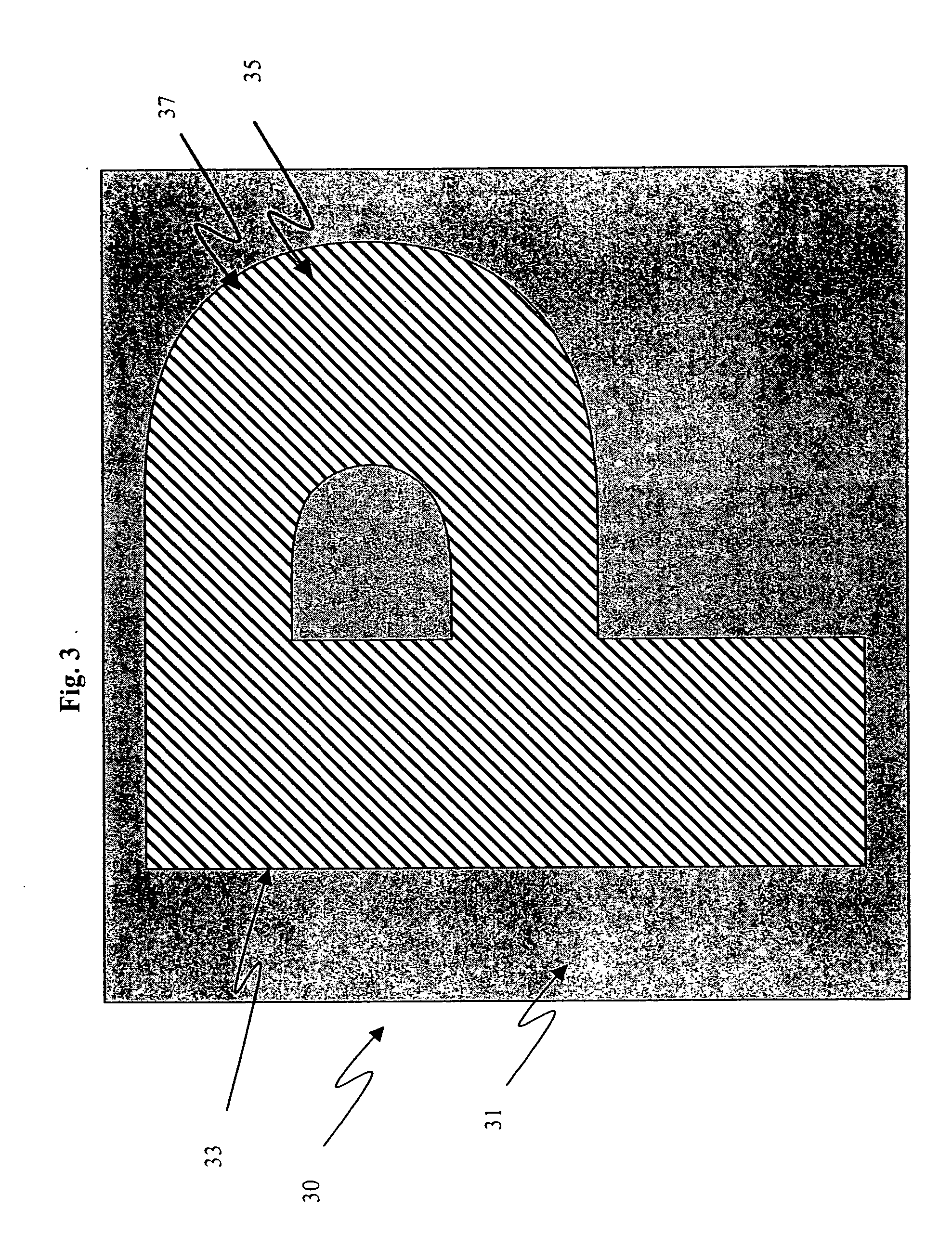Antistatic conductive grid pattern with integral logo
a grid pattern and antistatic technology, applied in thermography, instruments, photosensitive materials, etc., can solve the problems of increased brittleness, physical defects, loss of antistatic function, etc., and achieve the effect of reducing material costs, improving image processing equipment, and reducing coverag
- Summary
- Abstract
- Description
- Claims
- Application Information
AI Technical Summary
Benefits of technology
Problems solved by technology
Method used
Image
Examples
example 1
In this example a continuous antistatic layer was applied to a sheet of photographic polyethylene coated paper. The photographic polyethylene coated paper represents a typical photographic paper base of approximately 160 g / m2 of photo quality paper with 26 g / m2 pigmented of low density polyethylene (0.917 g / cc) on the top side. This layer contains approximately 12% by weight of anatase TiO2, an optical brightener and blue tints. On the backside was a layer of 28 g / m2 of clear high density (0.924 g / cc) polyethylene. A continuous antistatic layer was coated onto the backside polyethylene resin by a gravure coating process. The dry antistatic layer consisted of the following ingredients:
Baytron P (a polythiophene based conductive polymer 5%supplied by Bayer)Ludox AM (colloidal silica supplied by Du Pont)19%Neocryl A50454 (styrene acrylate copolymer supplied by Avecia)76%
The inherent color of the conductive polythiophene provide a slight density difference between the printed areas ...
example 2
This example was prepared the same as example 1, except the antistatic layer was printed to form multiple logo graphics, with conductive lines between letters of the individual graphic design logos and also between each individual logo, as to form an interconnected pattern or grid as shown in FIG. 4.
TABLE 1Antistatic Layer CoatingExampleTypeSurface resistivity1 (control)Continuous3 × 109 ohms / sq.2Patterned grid with3 × 109 ohms / sq.internal logo
As shown by the data in Table 1, both the control, as represented by example 1, and the patterned grid with internal graphic design logo had the same level of surface resistivity.
Surface electrical resistivity (SER) is measured with a Keithly model 616 digital electrometer using a two point DC probe by a method similar to that described in U.S. Pat. No. 2,801,191, col.4, line 4-34. Internal resistivity or “water electrode resistivity (WER)” is measured by the procedures described in R. A. Elder, “Resistivity Measurement on Buried Conduct...
PUM
| Property | Measurement | Unit |
|---|---|---|
| Fraction | aaaaa | aaaaa |
| Percent by mass | aaaaa | aaaaa |
| Weight | aaaaa | aaaaa |
Abstract
Description
Claims
Application Information
 Login to View More
Login to View More - R&D
- Intellectual Property
- Life Sciences
- Materials
- Tech Scout
- Unparalleled Data Quality
- Higher Quality Content
- 60% Fewer Hallucinations
Browse by: Latest US Patents, China's latest patents, Technical Efficacy Thesaurus, Application Domain, Technology Topic, Popular Technical Reports.
© 2025 PatSnap. All rights reserved.Legal|Privacy policy|Modern Slavery Act Transparency Statement|Sitemap|About US| Contact US: help@patsnap.com



